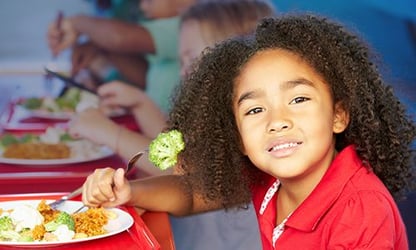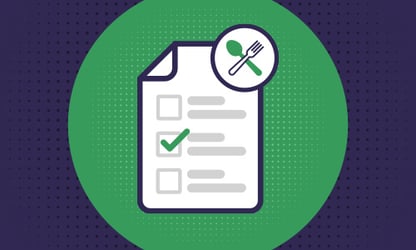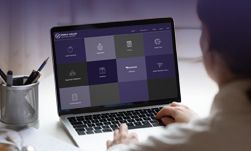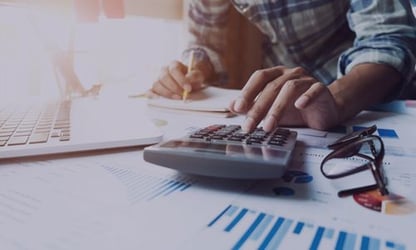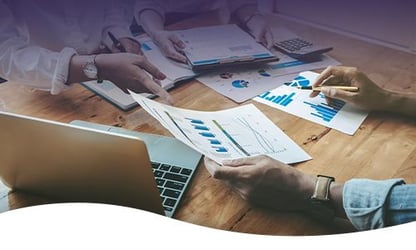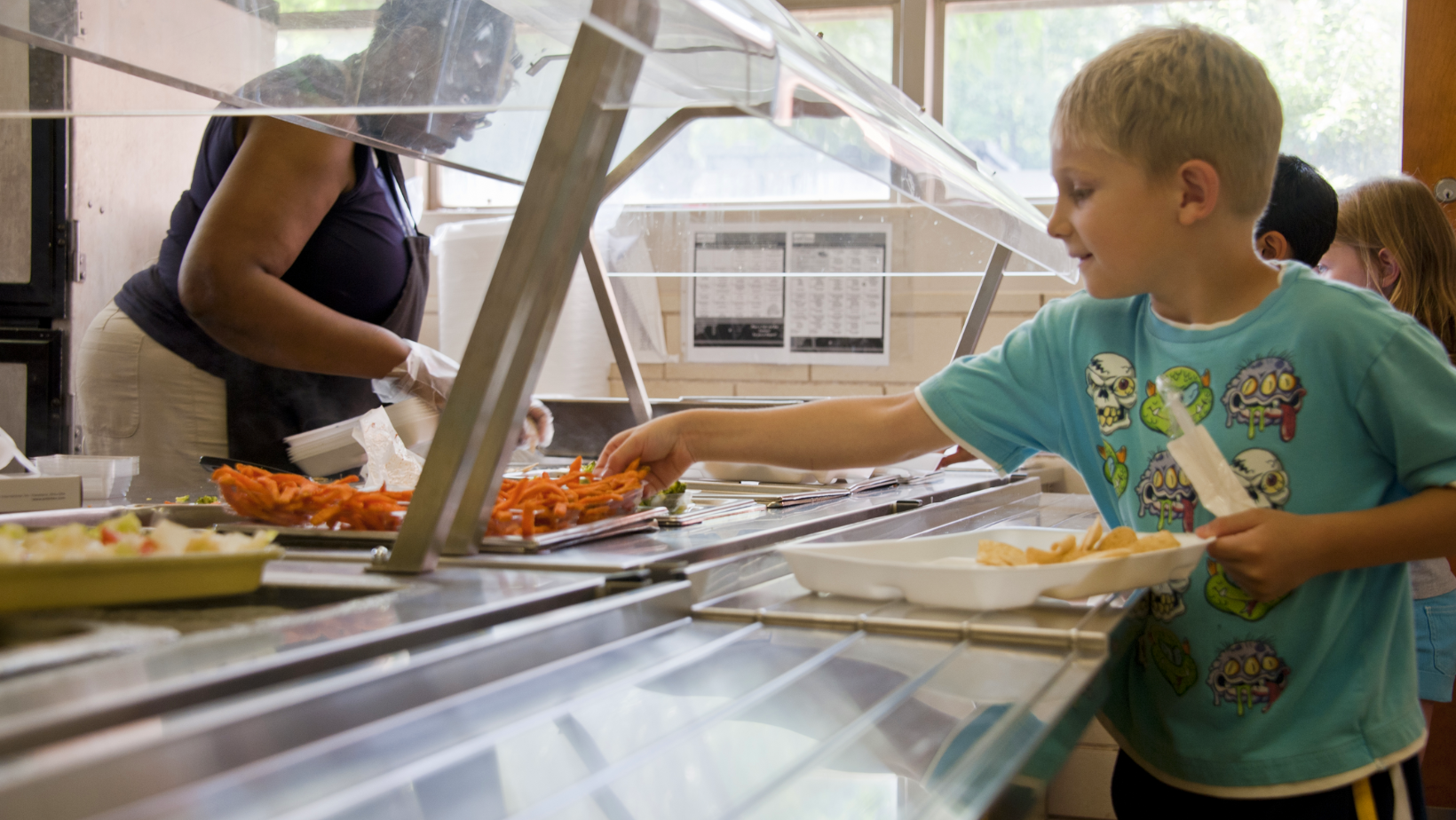
For many schools, the cafeteria can be the most challenging space to manage. A few specific school cafeteria rules can help create a positive and calm environment where students can take a break. Clear and visible rules listed on a lunchroom expectations poster ensure that students know how to behave in the lunchroom and the consequences if they don’t follow the rules.
This guide outlines various cafeteria expectations and rules to ensure that every student enjoys a refreshing break at lunchtime while savoring a nutritious meal. Keep reading to learn the benefits of cafeteria rules, tips for managing and improving a school lunchroom at any grade level, and school-specific rules and printable templates to help you get started.
Table of Contents
- Benefits of Cafeteria Rules
- Common School Cafeteria Rules That Work
- Tips for Managing a K-12 School Lunchroom
- Ideas for Customizing Rules by Grade Level
- FAQs
- Download Our Free Printable Rule Poster Templates
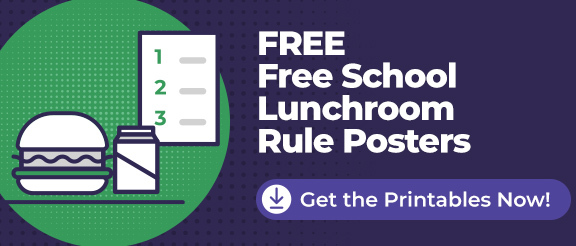
Benefits of Cafeteria Rules
Establishing and enforcing cafeteria rules can have many positive effects on the school community. They promote healthy habits and social responsibility, helping create a safe and positive environment for students of all ages.
Promoting a Safe and Orderly Environment
A safe and orderly environment in the cafeteria is essential for creating a positive school culture. When students feel safe and supported, they are more likely to be engaged and focused on their education.
Teaching Responsibility and Respect for Others
Following lunchroom rules teaches students important life skills that will serve them well throughout their lives.
Encouraging Healthy Eating Habits
Encouraging healthy eating habits in the cafeteria can have a positive impact on students' health and well-being. Schools that offer nutritious meal options and promote healthy eating habits can help students develop lifelong healthy habits. A University of Minnesota study reveals that students who develop a habit of good nutrition by the age of 15 maintain healthy diets into their 20s and beyond.
Preventing Bullying and Negative Behavior
Enforcing cafeteria rules against negative behavior helps create a positive and safe environment for all students, promoting a culture of respect and inclusion and reducing the risk of harmful incidents.
Common School Cafeteria Rules that Work

So, which cafeteria rules should you enforce in your lunchroom? Here are a few that are common and recommended.
Follow Directions from Staff
The overall rule is to follow directions from staff. In most instances, this means adhering to existing school cafeteria rules and regulations. However, unexpected incidents may occur.
In unprecedented times, students should always defer to staff members' instructions, which could include:
- Following the guidelines to exit the cafeteria in the event of a fire drill
- Moving out of the way to avoid dangerous situations
- Handling a technology malfunction that may change lunchroom operations
Students may not be as responsive to cafeteria staff if they are not actual teachers, or if they are substitutes they have never seen before. Administrators must ensure they understand that what the staff member says goes, regardless of who is in charge that day.
Walk, Don't Run in the Lunchroom
Young students have a lot of energy, and they love to run around. However, this behavior is not ideal because it produces the following risks:
- Injuries: When students run at high speeds, they risk injuring themselves and others, thereby posing a liability to the school.
- Disruptions: Running around contributes to a disruptive lunchroom environment. It may be detrimental to students who want to enjoy their lunch and teachers who wish to maintain order.
- Sets a Poor Example: If one student runs, it may encourage multiple students to follow suit, leading to chaos in the cafeteria.
Stay in Your Seat While Eating
Staying seated while eating avoids various unwanted incidents, as follows:
- Promotes Better Digestion: Staying seated while eating supports optimal digestion, ensures nutrient absorption, and reduces bloating and indigestion.
- Supports Mindful Eating: When students remain seated while eating, they can chew and savor their food, allowing them to focus on portion control. These healthy habits are especially useful in adulthood.
- Reduces Choking Risk: Moving around distracts students from the process of chewing and swallowing, presenting a choking hazard. It can also draw food particles into the airway.
- Increased Mess: Students who move around while eating are more likely to spill food, create crumbs, and generate a mess, which requires more work for staff and can lead to pest control problems.
Clean Up After Yourself
Schools should consider making a checklist that students can follow to ensure they clean up after themselves before leaving the lunchroom. The checklist may include:
- Clearing off all disposable trays, cups, and utensils and placing them in the appropriate bin. (Bonus, students will learn which bin is used for which items, helping them better understand recycling.)
- Cleaning up spills. This is an unwanted task that may teach children to be more cautious and responsible when eating.
- Wipe down surfaces. Students can go the extra mile by wiping down surfaces with a rag and disinfectant to make the cafeteria even cleaner and germ-free.
Use Polite Language and Table Manners
Polite language is generally recommended in schools, but it's especially essential in the cafeteria, as it's impolite to use rude language when people are eating. Additionally, students tend to be more casual at lunchtime. They should remember they are still in a school environment and are required to follow etiquette rules.
As for table manners, staff members shouldn't expect children to use their salad forks appropriately or keep their pinkies out when drinking. However, there are a few basic table manners to follow, including:
- Not talking with your mouth full or chewing with your mouth open: In addition to being gross, these habits can increase the risk of choking.
- Using a napkin: Using a napkin also contributes to a neater lunchroom and pleasing table habits. Students should also be advised to keep a napkin on their laps while eating to protect their clothes. If clothing becomes soiled at lunchtime, it could mean needing to go home and change or calling in parents to bring a change of clothes, increasing stress for all involved parties.
- Don't use the phone at the table: Some schools may want to encourage a casual environment in the lunchroom and allow phone use. However, it may be better for students to be engaged during meals.
Don't Share Food
Sharing food is often considered a sign of friendship and intimacy. Students may enjoy allowing their friends to try new foods or helping them supplement their meals. But if they understood the risk of illness, they might refrain from this not-so-healthy habit.
The CDC published a report on the dangers of foodborne illnesses, revealing seven pathogens were responsible for 53,300 hospitalizatons and 931 deaths in 2019. Students who understand this may not be so eager to share their food.
Schools and students should also realize that direct contact, such as sharing food, is not the only way to spread germs. Germs can also be spread when:
- Double dipping
- Sharing food from the same bag or container, such as a bag of chips
- Blowing out candles on a birthday cake
Raise Your Hand If You Need Help
Students generally know to raise their hands in the classroom if they need the teacher's attention. However, when they're in the lunchroom, where things are more casual, they may choose to shout or walk up to a staff member to ask a question. This type of activity can add to noise and disorder.
Administrators may choose to remind children to raise their hands by hanging signs with a list of rules. However, students won't learn unless you actively enforce the rules. If a student approaches a staff member without raising their hand or attempts to get the staff member's attention in another way, they should be asked to return to their seat and raise their hand before asking their question.
Tips for Enforcing Cafeteria Expectations Effectively

If you are managing a K-12 school lunchroom, you may feel overwhelmed. The cafeteria is often the most challenging area of a school to control.
Kids are often let loose in the cafeteria after several hours of schoolwork. Many are full of pent-up energy and need to be directed so they behave properly.
However, it is vital that a cafeteria is a calming place where everyone can enjoy their lunch. The following tips will help you enforce rules properly, ensuring students get the nutrition they need to fuel them for the rest of the day. Consider including them on a lunchroom behavior chart to ensure all students know what's expected of them.
Role of Teachers and Cafeteria Monitors
Your cafeteria staff may not consist of actual teachers whom the students have come to respect. There may even be students assigned to some of these roles. As a result, students may act out, and staff members may be unprepared to contain them.
However, when students and staff members understand their roles, they can maintain a peaceful cafeteria environment. Here are some tips to keep in mind:
- Designating Roles to Staff Members: Each staff member should understand their role in the cafeteria, whether it be monitoring lines, ensuring children enter and exit the cafeteria safely, or overseeing behavior during meals. This solution ensures each staff member knows their part and won't become overwhelmed.
- Staff Members Have the Final Word: Students must understand that staff members have the final word in the cafeteria and must comply with their instructions.
- Overall Guidance: Although cafeteria staff may have different roles in the lunchroom, they should also support similar goals, such as:
- Ensuring supervision and safety
- Reporting safety concerns to teachers and principals
- Communicating with staff, students, and parents, when necessary, in a clear and effective manner.
Positive Reinforcement and Cafeteria Awards
Positive reinforcement is one of the most important lunch period behavior tips. It rewards children for positive cafeteria behavior, encouraging them to keep up the good work. It may include the following methods:
- Cafeteria Awards: Consider setting up a cafeteria student of the month award for your best-behaved students.
- Verbal Praise: Show students you recognize their good behavior with verbal praise.
- A Reward System: A reward system may also be effective. Have children carry a card that can be stamped every time they exhibit positive behavior. When they receive enough stamps, they get a small prize.
You may even take a survey to understand the best ways to promote positive reinforcement.
Free School Cafeteria Rules Posters (Downloadable)
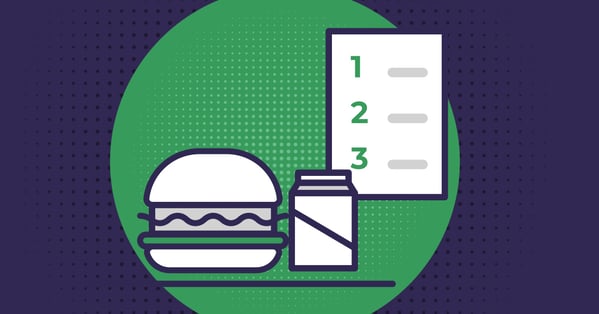 Our customizable lunchroom rule templates are designed to make your life easier. They will help you clearly communicate your expectations to your students, creating a more peaceful and enjoyable lunchtime experience for all.
Our customizable lunchroom rule templates are designed to make your life easier. They will help you clearly communicate your expectations to your students, creating a more peaceful and enjoyable lunchtime experience for all.
Easily edit and print out your own unique set of rules that cover everything from lining up to disposing of trash. Plus, they can be tailored to meet the specific needs of your school.
So why wait? Don't let disruptive lunchroom behavior ruin your day. Download our free lunchroom rule templates and take the first step in creating a better learning environment for students.
Ideas for Customizing Rules by Grade Level
General school cafeteria rules can be applied to any grade level, but you will be more successful if you customize them for various age groups. The following sections will provide ideas for rules for elementary, middle and high school, ensuring a tailored approach.
Lunchroom Rules for Elementary Schools
 Elementary school students are still developing their social skills and behavior. It is important to set clear and concise lunchroom rules that promote sensible activities. Here are some lunchroom rules for elementary students to consider implementing.
Elementary school students are still developing their social skills and behavior. It is important to set clear and concise lunchroom rules that promote sensible activities. Here are some lunchroom rules for elementary students to consider implementing.
No Running or Shouting
Running and shouting in the lunchroom can be dangerous. It disrupts other students and creates an unorganized atmosphere. Enforcing this rule will keep students safe and calm.
Clean Up
It's easy for students to leave behind a mess after they finish eating. It's important to teach them to clean up after themselves. This rule will help keep the lunchroom clean and teach responsibility.
No Food Fights
Throwing or playing with food can create messes in cafeterias and can also be dangerous. This rule will discourage students from engaging in these behaviors.
Using Please and Thank You
Using phrases like "please" and "thank you" when interacting with the cafeteria staff and other students promotes polite and respectful behavior. Practicing cafeteria kindness helps students develop good habits that they can apply in other areas of their lives.
Proper Seating
To prevent falls and promote a safe environment, students should practice proper seating. They should always keep their feet on the floor and avoid moving around a lot when eating.
Asking for Permission Before Leaving the Table
Asking for permission before leaving the table is an important rule that teaches students to show respect for others and avoid chaos in the lunchroom.
Proper Use of Utensils
The proper use of utensils can prevent spills and messes in the cafeteria and helps students develop good habits.
Middle School Cafeteria Rules

Middle schoolers are at an age where they are developing their independence and social skills. They are also prone to engaging in negative behaviors such as bullying and peer pressure. Specific cafeteria behavior expectations and lunchroom rules can help prevent these negative behaviors.
Waiting in Line
This rule ensures that students will be served in an orderly and fair manner. It also discourages negative behaviors such as cutting in line.
No Saving Seats
The 'no saving seats' rule promotes inclusivity and discourages negative behaviors such as exclusion and cliques, helping to create a welcoming and supportive cafeteria environment for all students.
Proper Use of Utensils and Food Trays
Remind students to use utensils and food trays to keep the cafeteria clean and hygienic.
Clean Up
To promote responsibility and good hygiene, students should clean up after themselves. This includes throwing away trash and wiping down their tables.
Using Appropriate Language
Remind students to use appropriate language and refrain from using profanity and offensive language in the cafeteria.
Respecting Personal Space
To prevent conflicts and promote a safe environment, students should respect each other's personal space. They must avoid physical contact that could be disruptive or uncomfortable for others.
Practicing Good Table Manners
Students should learn good table manners. Encourage practices such as not talking with their mouths full and keeping their elbows off the table.
Following the Designated Routes
Following designated routes establishes order and ensures a smooth flow of processes. It outlines cafeteria procedures for students, allowing them to move around the lunchroom in an organized and efficient manner.
General School Cafeteria Rules for High School
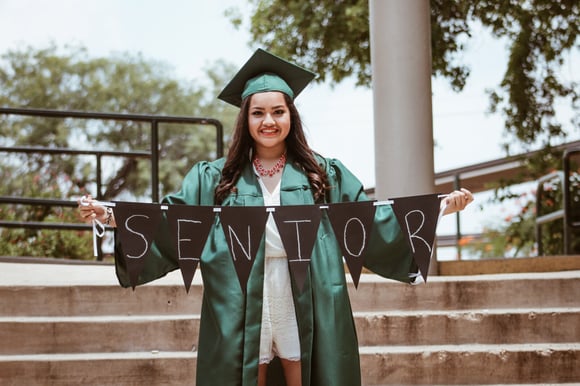 High school students are generally more mature than middle school and elementary school students. However, they may also engage in unwanted behavior, and it doesn't hurt to have a few reminders posted to ensure they stay in line. Here are some helpful and age-appropriate guidelines.
High school students are generally more mature than middle school and elementary school students. However, they may also engage in unwanted behavior, and it doesn't hurt to have a few reminders posted to ensure they stay in line. Here are some helpful and age-appropriate guidelines.
No Leaving Trash on Tables or the Floor
This rule promotes hygiene and ensures everyone can enjoy a clean environment.
Respectful and Polite Behavior Toward Cafeteria Staff
Polite, respectful behavior creates a positive and welcoming environment in the cafeteria.
Using Indoor Voices
Students should use their indoor voices while in the cafeteria to reduce disruptions and maintain a peaceful atmosphere.
Keeping Hands and Feet to Oneself
This cafeteria rule emphasizes the importance of personal space and respect for others. Students who keep their hands and feet to themselves can prevent physical altercations.
No Cell Phone Use
Prohibiting cell phone use during lunchtime encourages students to engage in conversations with their peers, promoting socialization and face-to-face communication.
No Horseplay or Roughhousing
Similar to the "keeping hands and feet to oneself" rule, this rule helps to prevent physical altercations, creating a safe and respectful environment in the cafeteria.
FAQs
What are good school cafeteria rules for elementary students?
Focus on simple, consistent rules like walking instead of running, sitting properly while eating, raising hands when addressing cafeteria staff, and using kind words.
Can students decorate their own cafeteria rules poster?
Yes — allowing students to design or customize their own school cafeteria rules poster can increase buy-in and ownership.
Why is food sharing not allowed in school cafeterias?
Prohibiting the sharing of food is one of the most important lunchroom safety rules. Sharing food spreads germs and can pose allergy and health risks. Some students may share to be nice, but they must understand the hazards involved if they don't align with food safety in school cafeterias.
Want to simplify lunch payments and cafeteria operations? Explore our free cafeteria posters and lunchroom behavior rule templates. They can easily be customized to meet your needs, supporting a pleasant cafeteria environment.
Contact us to learn more about how we can help you achieve the ideal administrative system for your school.


.jpg?width=734&height=251&name=School-Lunch-Kit_blog_CTA_image%20(1).jpg)






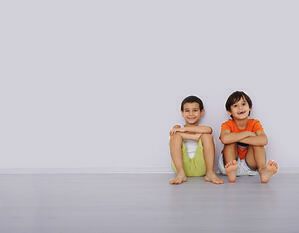

.jpg?width=450&height=250&name=School-Lunch-Rules_thumbnail%20(1).jpg)
